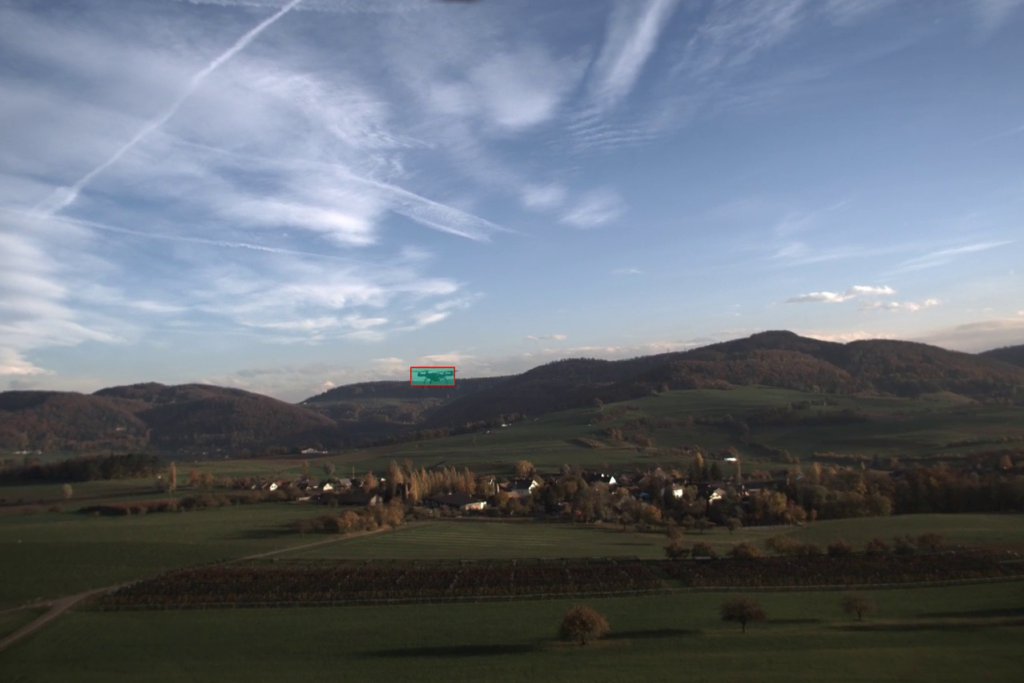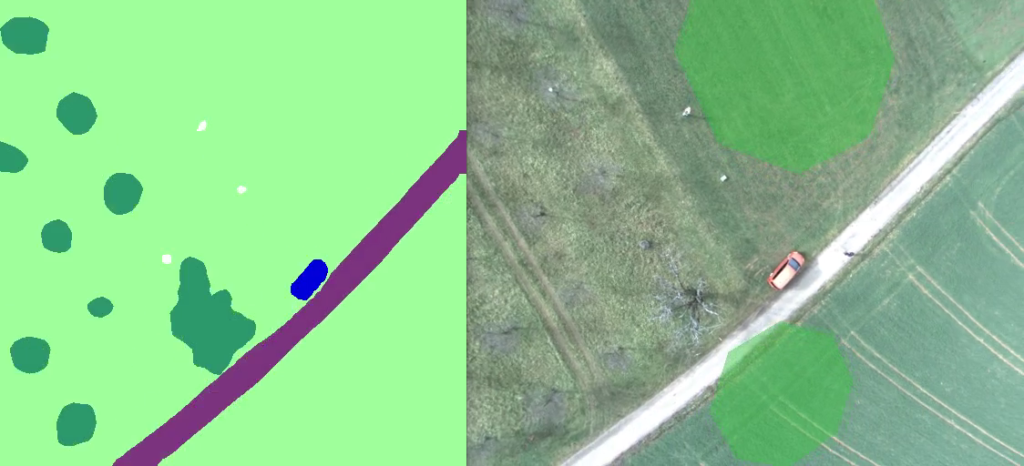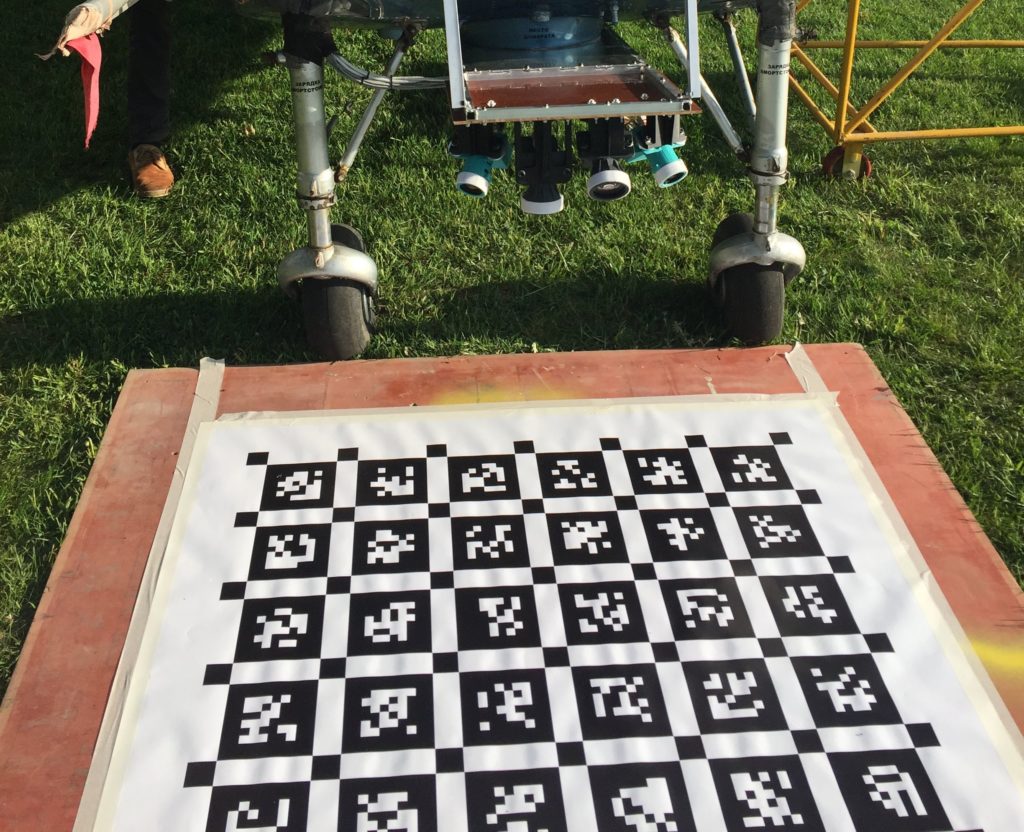
Daedalean’s software has already demonstrated its ability to use cameras equipped to drones or air taxis to recognize objects in the air, such as a drone, pictured here. Photo: Daedalean
Daedalean, a Zürich, Switzerland-based startup, has amassed $12 million in funding toward the development of the aviation industry’s first autopilot system to feature an advanced form of artificial intelligence (AI) known as deep convolutional feed forward neural networks.
The company was co-founded in 2016 by Luuk van Dijk, a software development engineer who previously worked for technology giants Google and SpaceX, and Anna Chernova, a mathematical biologist, helicopter pilot and also a Google alumni. Now, with a company of more than 20 software engineers, avionics specialists and pilots, Daedalean is developing an AI-powered autopilot capable of autonomously controlling flights for aircraft, electric vertical takeoff and landing (eVTOL) air taxis, helicopters and heavy drones.
A new round of funding has been injected into the startup by Amino Capital, Carthona Capital and Redalpine. According to van Dijk, performing flight tests on air taxi prototypes, fixed wing aircraft, helicopters and drones have helped to identify the limits of human-centered piloting and flight operations. Having a co-founder that is a helicopter pilot has also helped with their development goals of creating an autopilot system that can outperform a human pilot, says van Dijk.
“The understanding of visual input in aerospace is currently the exclusive domain of the human, and only fairly recently have computers been able to perform equally or better on such tasks, and then only pretty well defined ones like: ‘is there a cat in this picture,’ or ‘where is the helipad and is it unobstructed.’ That is the kind of artificial intelligence we intend to bring to market,” van Dijk told Avionics International.

This image shows the use of Daedalean’s image recognition technology generated from a real-time view from an onboard camera with a real-time advisory of safe landing spots. Photo Daedalean
Over the last year, Daedalean has been participating in a number of partnerships with avionics companies as well as flight tests, including a flight test in March with German eVTOL manufacturer Volocopter, which is currently in the process of flight testing its concept air taxi vehicle in Singapore. The tests demonstrated environmental perception capabilities for visual navigation and collision detection in landing and en-route scenarios, using three high-definition cameras mounted on the nose of the aircraft.
Van Dijk said that type of testing has confirmed what Daedalean’s engineers already know: that future air taxis will need to be capable of autonomously maintaining a certain vector and speed level in airspace. The autopilot system they’re developing will need to go beyond that, to replicate a human pilot’s level of decision-making and situational awareness.
That’s where the focus of the Swiss startup’s engineering team is centered around, developing software that is capable of being the human in the flight control loop that will have to exist between a cameras that can recognize obstacles and landing areas while constantly updating the flight trajectory followed by the autopilot system.
“The software contains a number of deep neural network components restricted to well defined tasks, providing navigation, landing guidance and collision avoidance at and above the level a human pilot flying an otherwise normal aircraft,” van Dijk said. “Given that you have to solve the problem of understanding a visual image to be able to fly autonomously, and that this understanding by computers can only be done with deep neural nets, it follows we have to come up with a means to guarantee the performance and safety of this kind of artificial intelligence.”

Daedalean’s engineering team installed cameras on a helicopter during a recent flight test, shown here with a pattern recognition board. Photo: Daedalean
The visual situational awareness system that Daedalean tested on Volocopter is already capable of fusing information from the Global Navigation Satellite System (GNSS), attitude heading reference system and cooperative traffic signals such as ADS-B, and demonstrated its ability to abort takeoffs and understand collision hazard detection during the flight tests. As mentioned by van Dijk, the next step will be proving to aviation certification authorities that the software can be integrated into future aircraft navigation systems and perform as prescribed.
As part of its effort to meet certification guidance for something that has never been used before in certified airframes, Daedalean has established partnership with EASA to propose a new form of design assurance for the artificial intelligence components of its system. Under a Innovation Partnership Contract, EASA officials are being advised by Daedalean’s engineering team on how they can certify neural networks to design assurance level A (DAL A) in the future.
EASA has already released a regulatory framework including a special condition to allow the safe operation of hybrid and electric VTOL aircraft in Europe. The special condition allows for certification to occur in one of two categories, including basic certification for aircraft that can land when a failure occurs and enhanced certification for aircraft that can land within alternative locations.
 |
Want more eVTOL and air taxi news? Sign up for our brand new e-letter, “The Skyport,” where every other week you’ll find the most important analysis and insider scoops from the urban air mobility world. |
Beyond Volocopter, Daedalean also recently performed flight testing of its system on a Cessna 180 in partnership with U.S.-based general aviation avionics manufacturer Avidyne. The flight testing evaluated the system’s ability to fly multiple approaches and produce data that van Dijk’s team will use to develop algorithms allowing their technology to autonomously fly an aircraft.
While there is no solid estimate as to when electric-powered autonomous air taxis could become a reality, Daedalean’s next goal is to release a DAL C version—a lower level of safety critical certification for avionics than DAL A—of its autopilot system by 2021, while continuing work on an eventual DAL-A version.
“I think the problem of autonomous guidance, navigation and control flying is actually simpler than many other robotics problems, so I think this is doable,” van Dijk said. “But then, I would say that, wouldn’t I? Otherwise, I would not have started this company.”